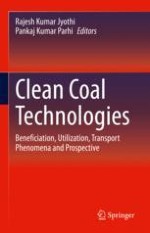2021 | OriginalPaper | Chapter
15. Coal Fly Ash Utilisation and Environmental Impact
Authors : Shanjida Sultana, Saifuddin Ahsan, Sakib Tanvir, Nawshad Haque, Firoz Alam, Mohan Yellishetty
Published in: Clean Coal Technologies
Publisher: Springer International Publishing
Activate our intelligent search to find suitable subject content or patents.
Select sections of text to find matching patents with Artificial Intelligence. powered by
Select sections of text to find additional relevant content using AI-assisted search. powered by
